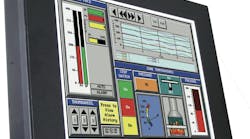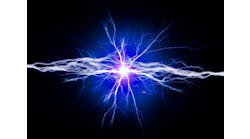In 2025, AVG Automation, parent company of EZAutomation, a midwestern U.S. manufacturer and factory-direct purveyor of industrial automation systems and components, will celebrate 50 years since its founding in 1975. The automation technology landscape has changed dramatically since that time, but many of the underlying industry needs remain unchanged.
Get your subscription to Control Design’s daily newsletter.
Q: Innovation has always been a strong suit with EZAutomation and AVG Advanced Technologies. As founder and chairman, how have you been able to maintain a continued run of technology and products that transform the industrial automation space over the course of decades?
A: Innovation is in my blood, in my DNA. It is food for my soul. I don't think I can live without it. I deal with it every day, in product designs, in politics, in public service.
Here's a quote from Speaker Gingrich in his foreword to my book titled, "Ab Ki Baar Trump Sarkar." He wrote, “Kumar’s success in the business world is a legend with his reputation built by his ability to recognize the best path to greatness. He sees things others miss.”
My innovation comes from my long, hot showers where my wife says that I'm listening to the national anthem with my hand over my heart. I've never allowed anyone to photograph me in that pose, so I don't know, but it may be true.
In 1984, General Motors had decided to buy 100 press lines for their stamping plant. In one of my hot showers in early 1985, I thought of a resolver with built-in electronics using a flexible potting compound.
There was nothing like that on the market. As I got out of the shower, I called the chief engineer of General Motors, Warren, and told him about my idea. He got very excited.
Within the next three days—those days, things moved a lot faster—Warren gave me an order for $10 million worth of resolvers with no physical sample and no prototype ever built. Sometimes innovation at the right time has great rewards. Sometimes necessity is the mother of invention.
In the summer of 2004, we got a notice from our marketing partner with mutual exclusivity that they were going to terminate our contract for stocking and selling our EZTouch product line. That was, at that time, half of our business.
We begged, but they did not change their mind. In the next six months, we designed and put in stock 10 new product lines including the EZPLC, the EZTouchPLC and EZMarquee.
Our survival was at stake. Our ex-partner had decided to buy its HMIs manufactured in China along with other automation products.
We had to come up with better products with exceptional innovation to compete with products made in China with Chinese labor costs. To complete the story, we sued and a Chicago jury found this ex-partner guilty of 42 counts of breach of contract and misappropriating our confidential intellectual properties. The parties settled out of court, but this is how innovation goes.
Q: Much has been made of the migration of manufactured products, especially electronic components, to China. Obsolescence has always been a key consideration for machine builders looking at which devices to include in their equipment. Do you foresee a future scenario in which Chinese products are no longer allowed in the United States, and so replacement or even support is not available to machine builders or the factories or plants operating that equipment?
A: Absolutely. China is now an existential threat for America. Sentiment is bipartisan. Both political parties are in a race as to who puts on bigger tariffs on Chinese imports. In one of my recent conversations with President Trump, he asked me what I thought of stopping all Chinese imports cold turkey. With this in mind, the corporate heads of OEMs have to think long and hard if they want to continue allowing their engineers to specify made-in-China automation products.
There is no question in my mind that the made-in-China products in our space, that is HMI and PLCs, will have big tariffs or be not available at all.
Also, obsolescence caused by lack of supply of Chinese-made products should be a major concern for calculating the total cost of ownership of any product. Because of proprietary software in Chinese products, migration is going to be extremely challenging. Therefore, these OEMs need to make the decisions now and not later.
Q: On a related note, you're calling the EZTouch Series 5 HMI your "China killer." How has the touchscreen interface been redesigned to make it less expensive than those sourced from China, while still delivering the functionality and support that your customers have come to expect?
A: Again, necessity is the mother of invention. Our competition from China just introduced their latest HMI. So, we went to work to reduce our cost of manufacturing further by more efficient design, investing in more automated manufacturing lines and are proud to introduce EZ5. EZ5 has a newer microprocessor. Its memory is a bit smaller. The number of screens are limited to 64. For most customers, 64 is sufficient, but it retains all the other exceptionally innovative features of HMI—online edit, visibility tags, remote monitoring and control over smartphones, real-time data-logging, email and text alerts, on-screen recipe edit, C Level scripting to save PLC code, and screen life of 50,000 hours at 40 °C.
Q: The EZTouch miniPLC combines human-machine-interface and programmable-logic-controller functions and features in a small form factor. Given the punch it packs, the term "mini" might even be misleading. Can you talk a little bit about the amount of innovative technology per cubic inch that OEMs will find in this component?
A: That's a very good observation with the term “mini.” We didn't think about it that time. Perhaps it should be called “mega in a mini size.” It's a great product for OEMs. The reason we called it mini is because this product has its 4-inch screen size with 27 I/O points, and it’s only 5 inches by 4 inches, and it is only 1.5 inches deep. That's the reason we thought of calling it a mini.
The website also has a very nice 360° rotational view of the product to view what it looks like overall. Using EZTouchPLC is a prime example of made-in-America innovation costing less than made-in-China.
No competitor of ours, none, can come close to this engineering marvel made in America. One of the five traits of AVG EZAutomation is maximum horsepower per cubic inch.
Inspiration for this product, as usual, came from talking to our customers. They needed a very compact and thin HMI with PLC integrated in it, 27 I/O, that is 12 dc inputs, eight dc outputs, 4 of 5-A one form C relays, two analog in, one analog out, 250 kHz encoder input. All I/O is wired through plug-in terminal blocks with LED indicators.
These dc outputs are shortcircuit-proof. We even put in numbers on all relay contact outputs, so the customers do not have to put external numbers costing at least $20 plus labor for each number across the contact.
Our customers save at least $200 for each PLC, besides the very low cost of EZTouch miniPLC at $399 for a 4-inch 27 I/O model. Check it out.
Even the lowest-cost made-in-China integrated HMI-PLC with no relays cost about double the price of the $399.
Coming back to the PLC, it's a high-end PLC with lots of function blocks with a unique drag-and-drop feature in its PLC programming.
You can watch a video of this feature on our website.
Go to the intro page for this product and click on product videos, and it is the No. 3 video.
The website for our OEM customers, as well as the system integrators, is osi.ezautomation.net.
The HMI is a top-of-the-line HMI with the same features as EZ5. Also, why integrate the HMI with the PLC? It is for panel space and cost.
There are a lot of small machines where there is a fight for every micro-inch of space. I've seen that myself, like small packaging machines, air purifiers, air compressors, generators, where space is at a premium.
Q: What other benefits come with products that are made in America, and how will those benefits carry on into the decades ahead, in light of the changing technological, financial and political climates?
A: I have already discussed the financial and the political aspects. Again, there is no question that made-in-China products are going to be tariffed and cost more, if not totally banned.
If China attacks Taiwan, all hell is going to break loose, and there will be complete embargo on Chinese goods. There are significant advantages of design and made-in-America products. When you are closer to your customers and are in the field in their facilities, you design better products such as EZTouch with patented HMI online edit, saving thousands of dollars in changing screen design on the fly with zero downtime.
No other HMI can do it. This is American innovation at full display, both EZ5 and miniTouch PLC have it.
There is a hilarious video on this feature. If you go to the website I talked about, click on EZ5, click product videos and it is No. 3 video. You will enjoy it.
Another innovative feature we have is the visibility tag—that is, we lay objects on top of each other and make them visible only when needed. This is a great space saver on the panels.
Another is C Level scripting that cuts down PLC logic; real-time data logging came out of a personal customer visit at an OEM's facility.
This customer makes compressors, and some customers of theirs do not maintain the compressor properly and claim warranty.
So this OEM wanted to have a real-time data-logging, so that, sitting in New Jersey, the OEM can show a customer that their maintenance did not pay attention to a number of alarms resulting in the motor burning up. This was a great input.
By the way, EZAutomation can add new features in less than three months, unlike others, who'll take like two years.
Another feature that came from a customer visit was OEM utility. Many OEMs want to protect their intellectual property in the HMI design, so they do not want the user to have access to the screen designs using our programming software.
Yet they still want to be able to upgrade their HMI screen design from time to time.
With the OEM utility, all the OEM has to do is to email an executable file to the user and without any software just connect the programming port to the laptop with the email in it that the executable file is sent over email. EZ5 on any TouchPLC will do the rest.
There's another feature that came out of a close customer contact, not possible for manufacturers sitting 10,000 miles away.
This is mini 5’s mini Wi-Fi capability, both EZ5 and mini have the option of inserting a tiny Wi-Fi module to their RS-232 port.
You can program, monitor, edit your easy file or mini from 50 feet away and sitting on a proper workbench instead of climbing or obstacles like conveyors, asking the operator to move out, asking maintenance to open the control cabinet and struggling to connect the programming cable to the laptop, holding the laptop in hand instead of a table.
Sometimes the HMI is in an environmentally controlled area, and the programmer will have to suit up to go near the HMI. Perhaps we should make another hilarious video showing this trouble in how to edit the program on the HMI EZ5 or miniTouch PLC or other products made in China.
I’ll close by telling you another story. You all know about 24 Vdc fans and solenoid. You know their wattage and dc nomimal current.
So let's say it's a 6-Watt fan with 250 milliAmp nominal current. It should be no sweat for dc outputs rated at 500 milliAmp,right?
So, you build your machine but constantly see your PLC dc outputs burning out.
You tried to contact your automation supplier’s tech support, but no luck. Frustrated, you just decide to add external 5-Amp solid-state relays (SSRs), costing $30 in just relay cost, plus labor.
You have four outputs that are giving you trouble, so spend another $200 in cost plus lose precious panel space.
On top of all this, you want the PLC outputs to be shortcircuit-proof. You do not want to have to install fuses and increase the downtime of the machine if something burns out. But the 5-Amp SSR unfortunately is not shortcircuit-proof.
My dear friends, the problem here is a locked rotor current of the fan motor, which is 600 milliAmp, and the inrush current of the fan motor is almost 1 Amp. This is a real-life story.
EZautomation came up with a current module with eight outputs, each one capable of handling 1-Amp locked rotor current and 4-Amp inrush current, fully shortcircuit-proof in a 2-by-2-by-1-inch EZ PLC I/O module. This was done from notice to production in three months.
You can imagine this is our No. 1 customer at EZAutomation today. Try getting this done from a Chinese manufacturer.
This is the advantage of made in America. You get better products, and you get better and quicker solutions to problems.




